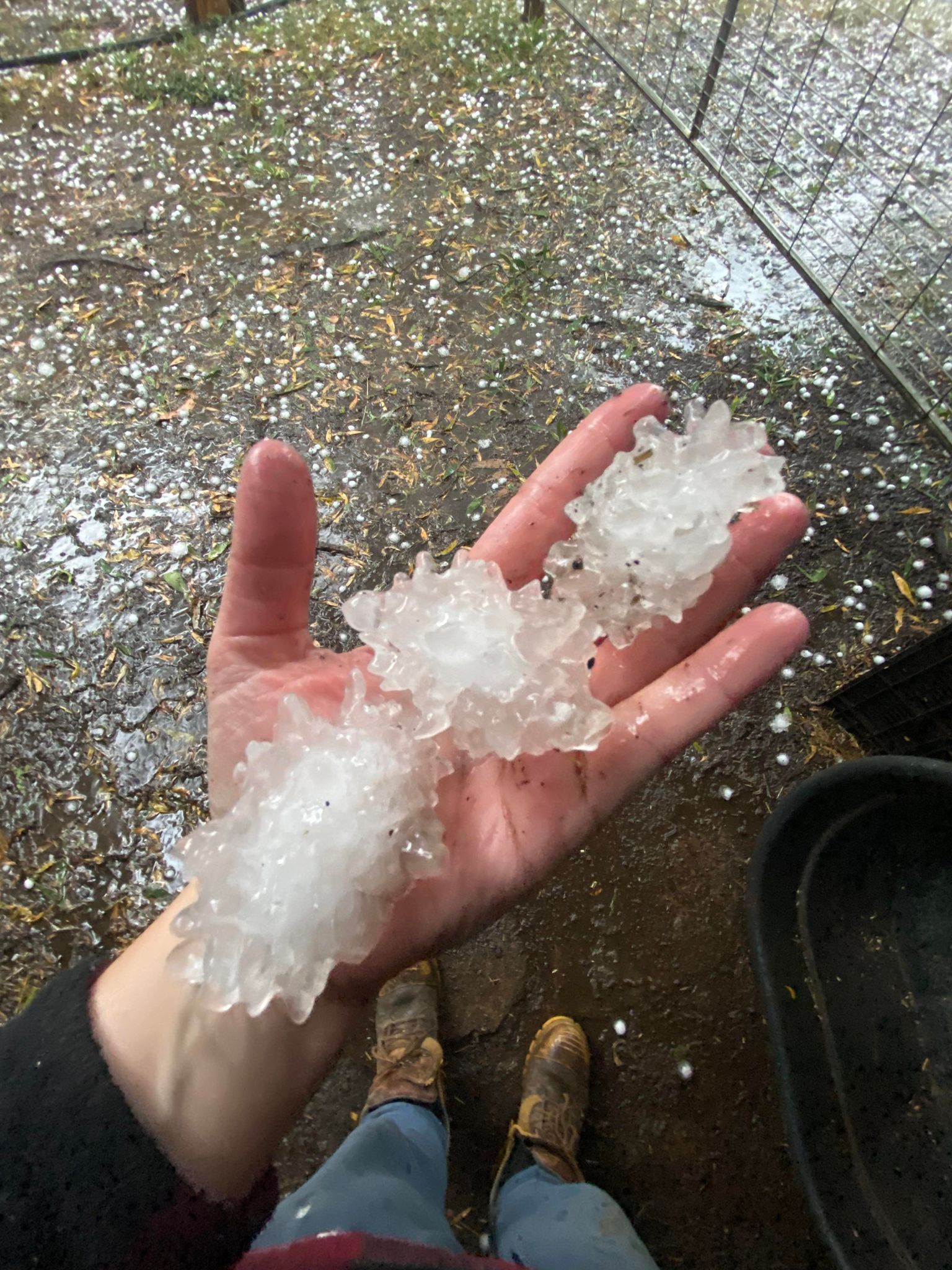- Victoria, Queensland, and New South Wales all experienced damaging hail events in the 2022 storm seasons.
- Reported damage included potato, citrus and grape crops with some growers losing 30-50% of their crops.

There were numerous damaging hailstorm events in Australia in 2022. On January 5, severe storms that included marble-sized hail damaged most potato crops in the Ballarat agricultural district in Victoria. Citrus and grape crops near Griffith, New South Wales were also damaged by hail in severe storms on January 6 and 14, with some grape growers losing 30-50% of their crops. On January 6, a severe storm with giant hail in Portland, Victoria led to more than 100 calls to the State Emergency Service.
Later in the year, large hail, some cricket-ball sized, fell near Rockhampton, Queensland on 24 October. In late November, hailstorms across the Mallee region of Victoria caused millions of dollars in crop losses and damaged cars and houses, while in New South Wales a hailstorm in Port Macquarie on November 28 caused property damage and prompted more than 120 calls for assistance from the New South Wales State Emergency Service.

Climate change affects atmospheric properties of relevance to hailstorms in ways that lead to expectations of reduced hailstorm frequency but increased hailstorm severity. However, there is large geographic variation in observed and modelled changes, so hailstorm responses to climate change remain highly uncertain in Australia and across the world. The ARC Centre of Excellence for Climate Extremes is conducting research into how climate change is affecting severe convective storms including hailstorms, as well as links between large-scale atmospheric conditions and hail occurrence.
Main research contact: Dr Tim Raupach | t.raupach@unsw.edu.au
The State of Weather and Climate Extremes 2022
Weather and climate extremes in Antarctica
Extreme events in 2022
Heatwaves in Western Australia
Extreme rainfall and flooding in Queensland and New South Wales February-March 2022
Record low Antarctic sea ice extent in 2022
Simultaneous Antarctic and Arctic heatwaves
Collapse of East Antarctic Conger ice shelf
Hailstorms in Queensland, Victoria and New South Wales
Damaging wind gusts in South Australia and the Northern Territory
© 2023 ARC Centre of Excellence for Climate Extremes
References and acknowledgements available in the PDF version available here.
Materials used are for educational purposes and either author provided or used under fair dealing provisions.
